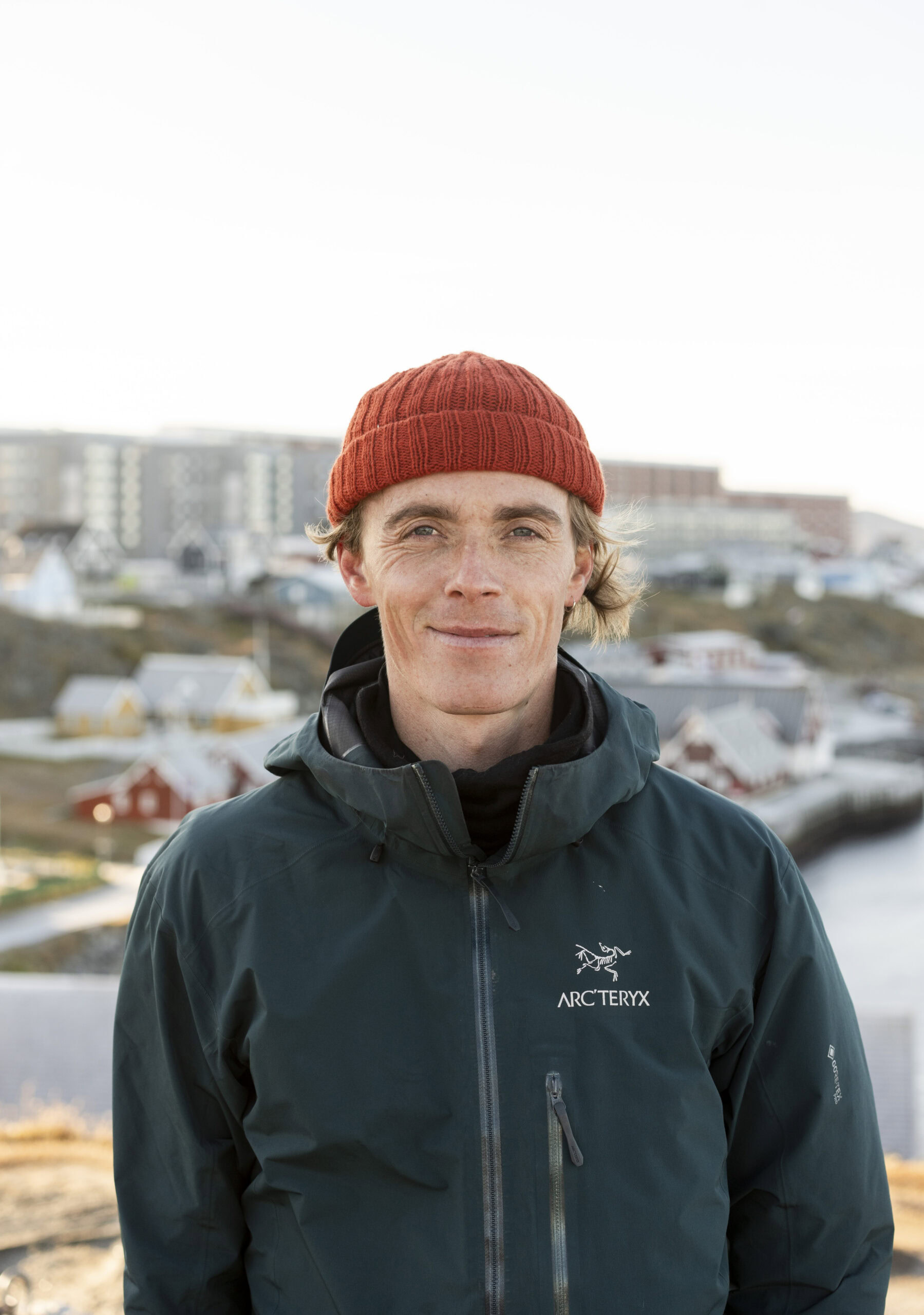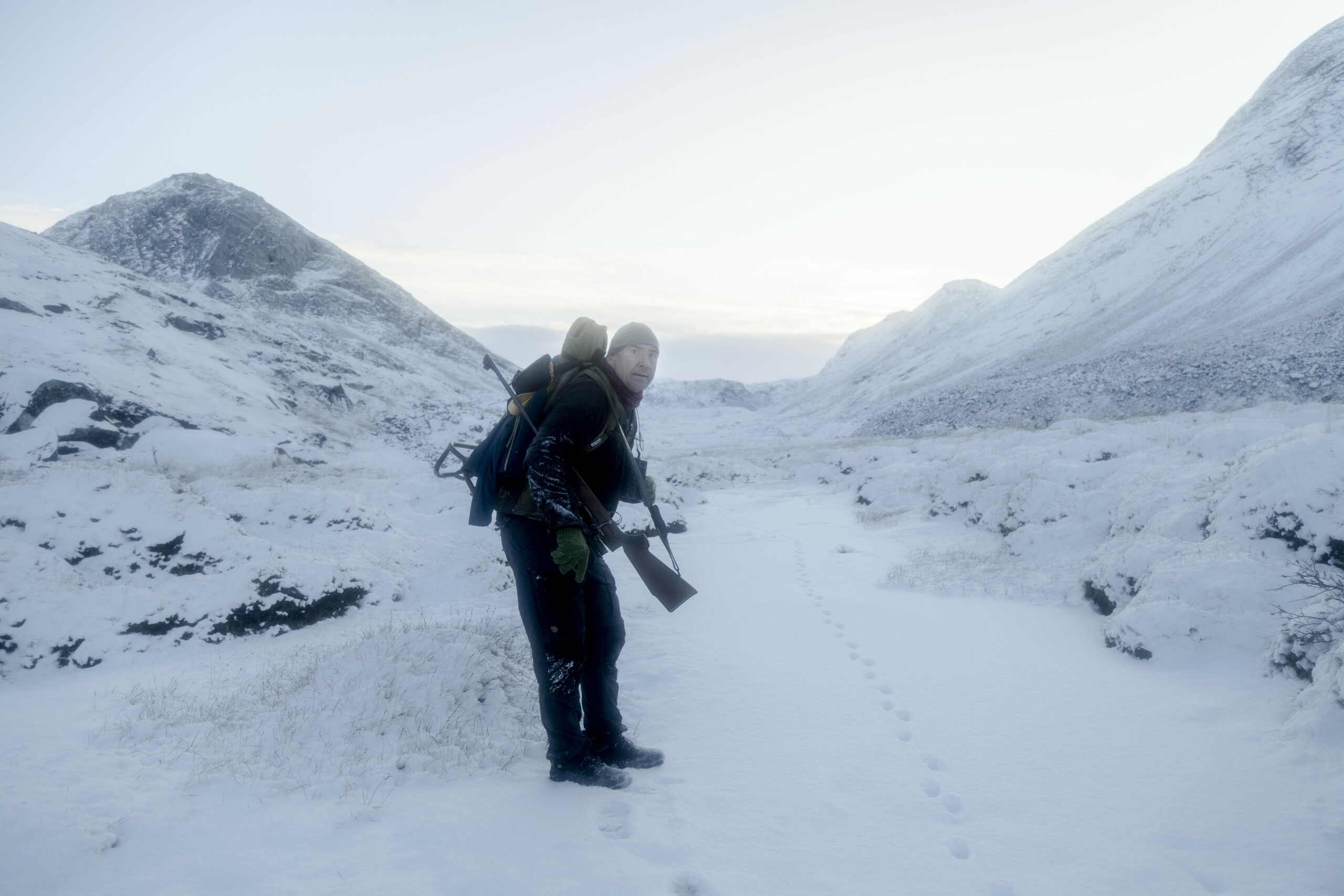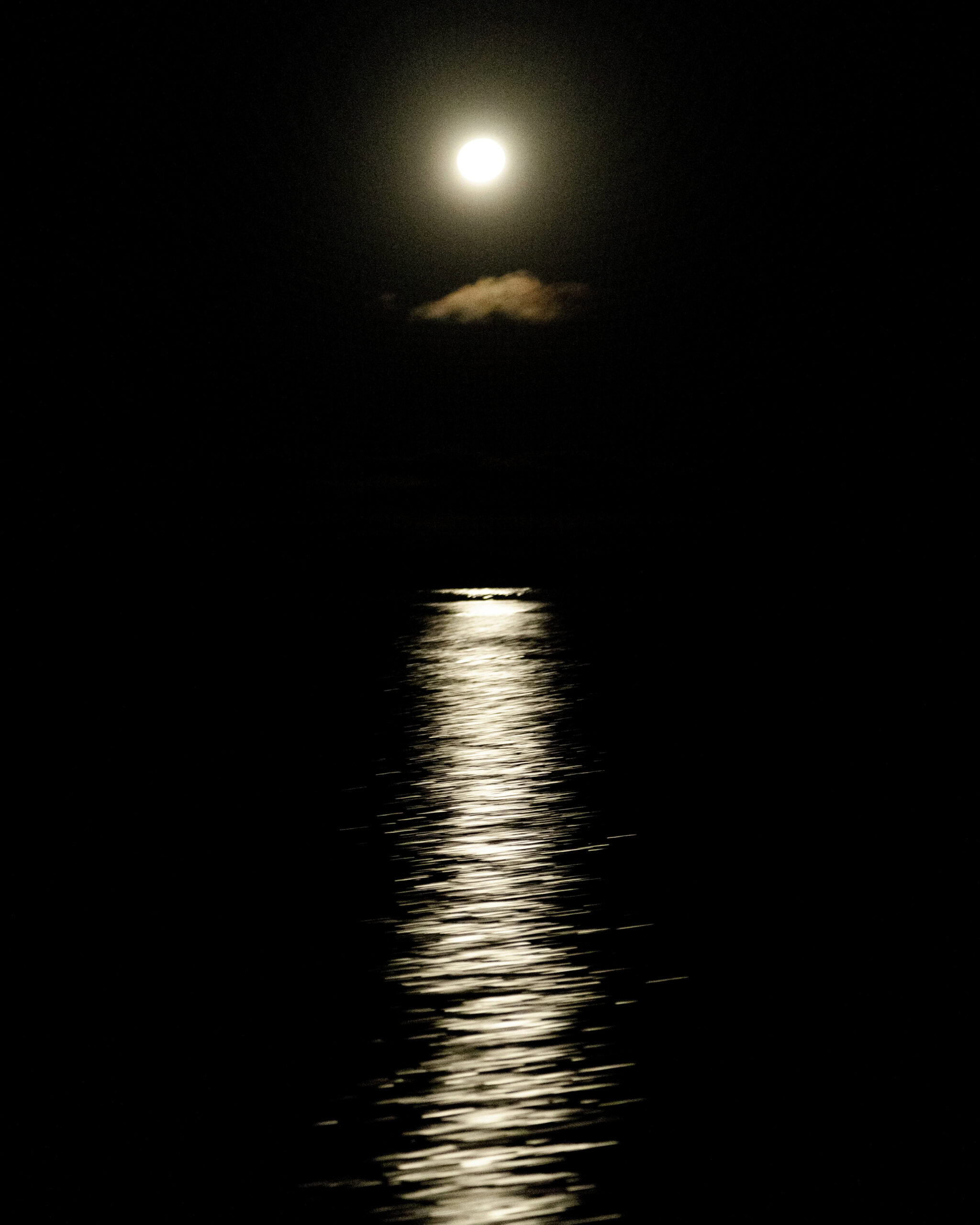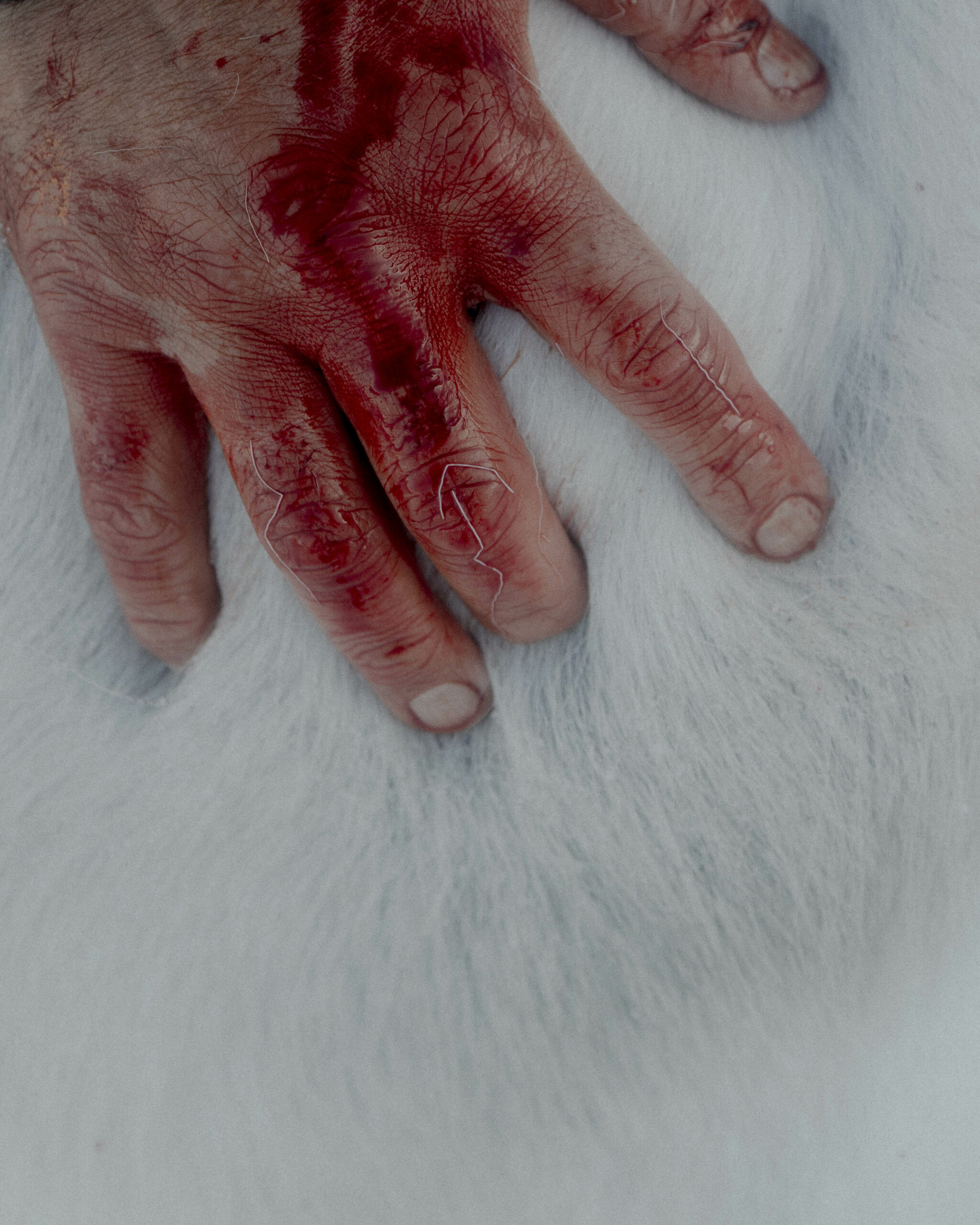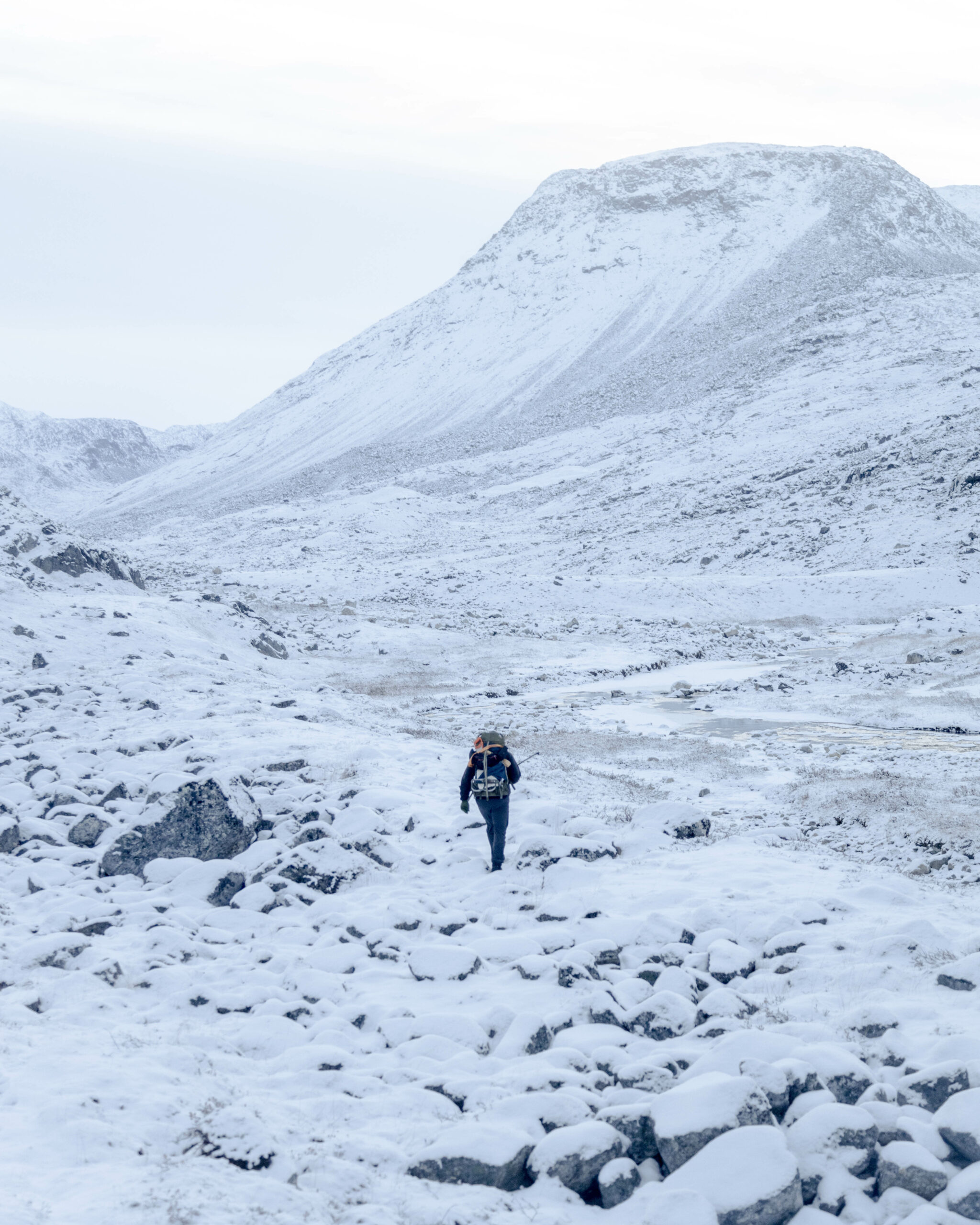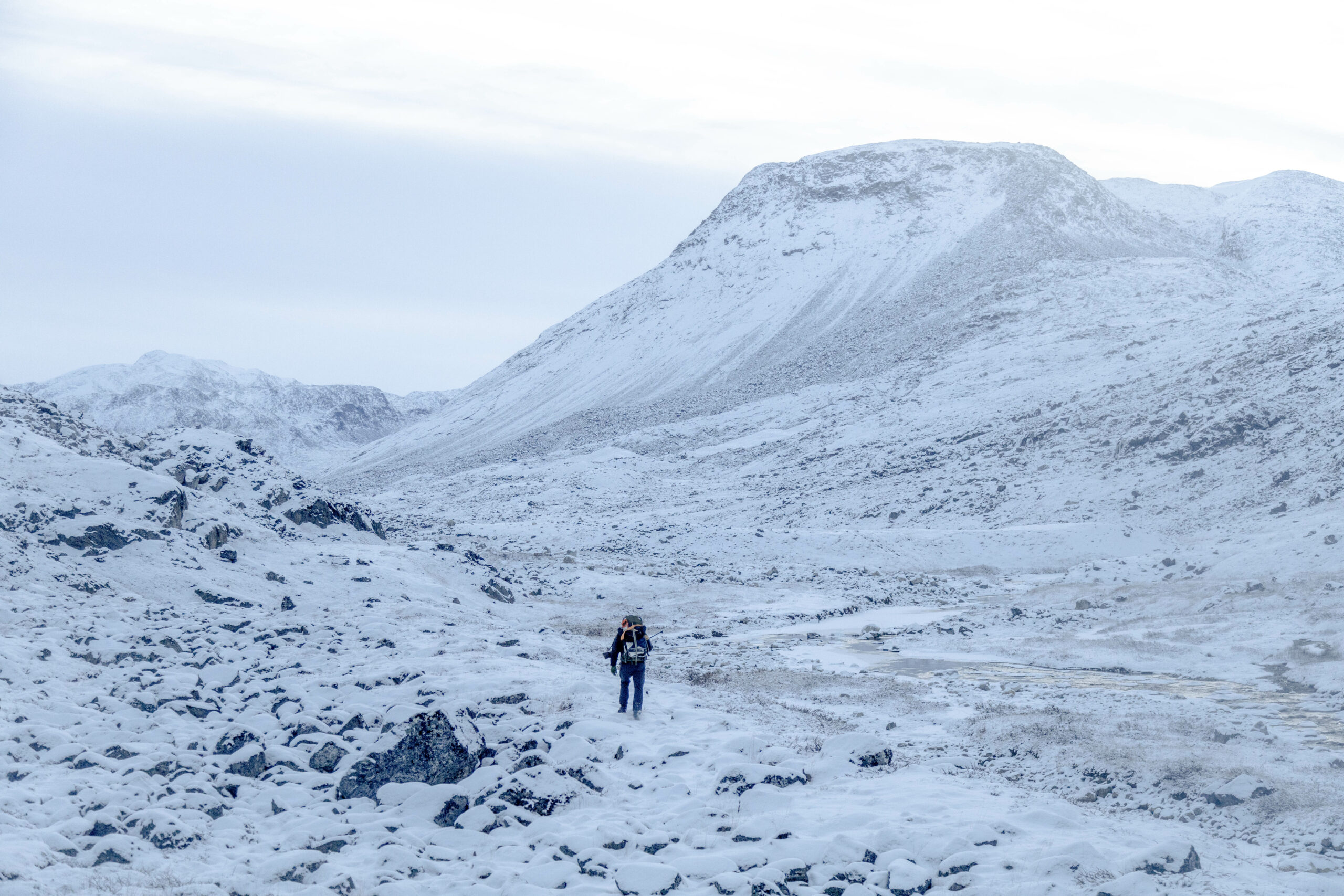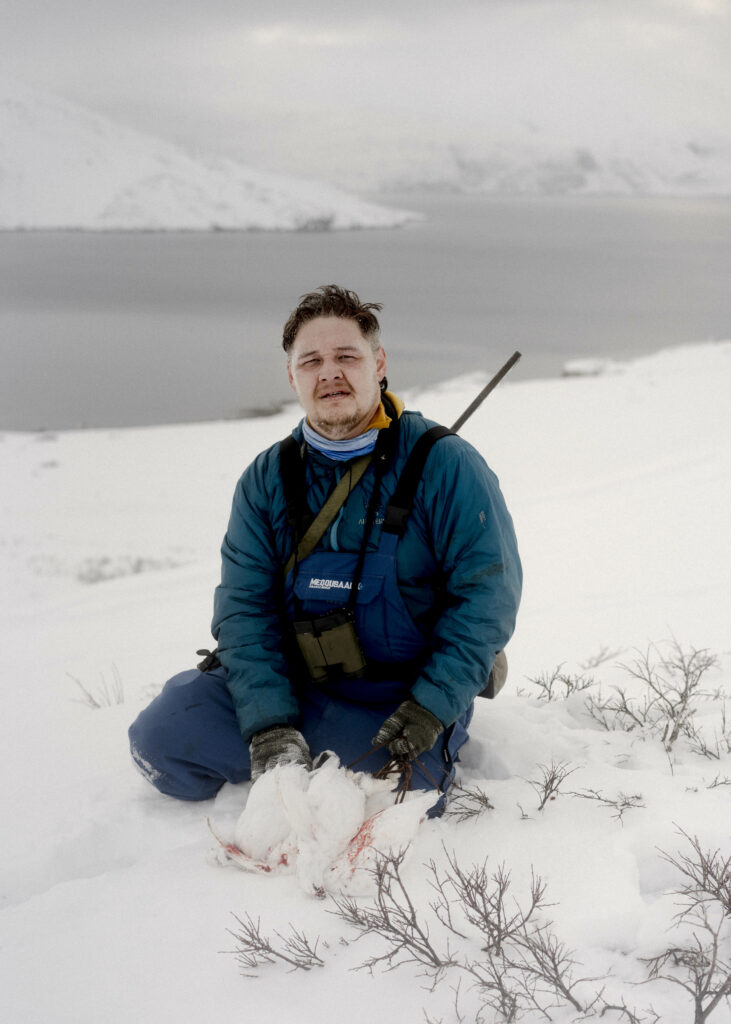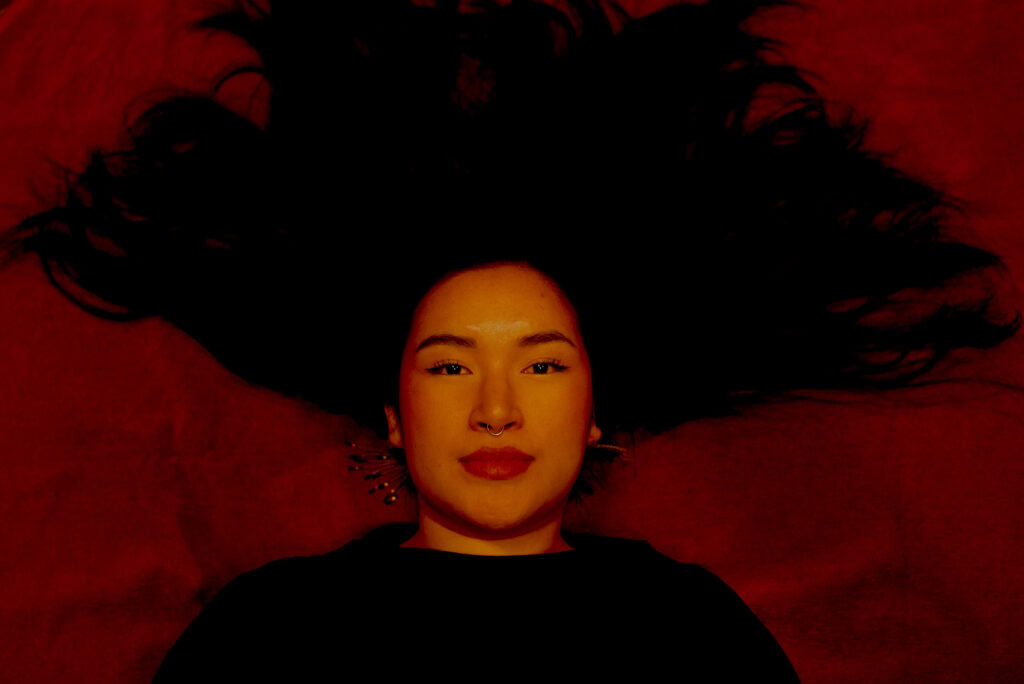"Nature, it heals, it doesn’t judge."
Photo – Oscar Scott Carl – Visit Nuuk
Hunting is a part of him. It has been since he was eight years old, when he carried his first reindeer. Join the last reindeer hunt of the year with Greenlandic Jan Erik Pedersen in the harsh hinterland near Nuuk.
The last hunt
“Good morning! Feeling fresh?” It’s 7:04 on October 28, 2023, and I meet Jan Erik Pedersen, who is busy preparing the final details on the boat before departure. The temperature is below freezing, and the ice needs to be broken as we leave the small harbor in the Nuuk district of Qinngorput. Eqaluit Parliit (Præstefjorden), a three-quarter sail from Nuuk, is the destination for today’s hunting trip, and it’s crucial to leave early to be the first in the fjord. So, we set sail in the dark. A darkness that means we have to be particularly careful of small ice floes, which could potentially sink the boat if we collide with them. Jan Erik looks forward to today’s hunt:
“I’m always a bit excited when I go hunting. Even though I’ve been on thousands of hunting trips, I look forward to it just as much every time,” he says, sitting with his morning coffee in the boat.
However, today’s hunt is also a bit special on paper. It’s the last trip of the year, as the reindeer hunting season ends in a couple of days, and the long wait until August 1 begins again. Jan Erik hasn’t shot as many animals this year as usual, he tells me. “Usual” means, in his case, the last 45 years. He has been hunting in the vast hinterland around the world’s second-largest fjord system near Nuuk since he was eight years old. First with his father as a mentor and later as a mentor himself for his own son. He knows this land like the back of his hand and has shot hundreds, maybe thousands of animals.
Eqaluit Parliit (Præstefjorden) is one of the places Jan Erik remembers most vividly from his childhood. He recalls how his father taught him to catch trout with his hands in the river, how they set up a tent for several days and lived off the land, and how the heavy steps the first time he carried the hindquarters of an animal made tears well up. Emotions that his body still possesses and are one of the crucial reasons why hunting is so special to him:
“It challenges the body and the senses. It challenges everything about you, which is rewarding in many ways. You have to confront yourself out here.”
13 to 14 minutes per kilometer
The deep blue color paints the sky over the mountain peaks around us as we arrive at the mouth of the fjord. Jan Erik secures the boat. One must be particularly attentive to the tide here as it can rise and fall up to five meters. Jan Erik is impatient. It radiates from him. Like hot water just before it boils. He wants to get going. The days have become shorter here at the end of October.
We start our walk into the snow-covered valley surrounded by mountains. The snow crunches under our feet. It’s quiet. So quiet that it rings in the ears. Jan Erik quickly spots fresh footprints in the snow from other people: “Damn. They must have slept in here and left early.” He steps into the recorded footprints in the snow, looks concentrated, follows them closely for 30 seconds before exclaiming:
“I can see from the distance between the footprints that they walk about 13-14 minutes per kilometer. If we walk 8-9 minutes per km, I think we’ll catch up with them about 3-4 kilometers in.”
We jog ahead to catch up with them. The deep blue color has lightened with a hint of green over the mountain peaks. Two ptarmigans in their white winter plumage fly past us. 3-4 kilometers later, as Jan Erik predicted, we meet two other hunters also on the last reindeer hunt of the year. I smile a bit astonished to myself. Surprised by the precise prediction. After a short conversation, we move on. The sun is rising over the mountain. I notice that Jan Erik’s gaze is constantly lifted towards the mountain. He scans the landscape for animals, and only rarely does he look where he’s stepping.
The shot
“Shh!” Jan Erik suddenly says, putting his finger in front of his mouth. He peers concentrated with binoculars in front of his eyes:
“I can see a small herd a couple of kilometers ahead. The bull is very alert, so we only move when it does.”
We lower our shoulders and move quietly. Jan Erik says we should follow the river, as it muffles some of the noise from the crunching snow under our feet. With about a kilometer’s distance to the herd, the bull catches wind of us, and the herd moves away. We continue our walk. With heavier steps than before. Over the smooth stones in the river and further up to a small peak. Jan Erik sees some small dots in motion on the other side of a large, frozen lake. It’s the same herd heading away from us. They are several kilometers away. Jan Erik stands still. Evaluates the situation with furrowed brows:
“I think they (the animals) might decide to turn 180 degrees and come back this way, so let’s hide behind that one and wait,” Jan Erik says, pointing to a large rock.
Jan Erik knows his landscape. And it knows him. With a feeling like a kind of sixth sense that anticipates what the eye cannot, the animals change route shortly after and move directly towards us. But make no mistake: It’s not Jan Erik who decides out here, he reminds me. It’s Mother Earth.
Jan Erik calmly lays his Sako 222 rifle ready on the rock we’ve hidden behind. A rifle Jan Erik got from his father when he was young. The animals continue their route directly towards us. For a moment, the animals disappear from our sight. Where did they go? Jan Erik calmly holds his position, and suddenly, the herd stands 15 meters in front of us. He takes aim. Downs the first animal. Reloads. Next animal. The rest of the herd moves confusedly in a circle around us and then continues. Jan Erik goes straight to the two animals he downed and begins gutting them one by one. It’s about minus 10 degrees Celsius, so you have to start immediately so the cold doesn’t bite into the body’s interior.
Echoes of history
Historically, Jan Erik’s ancestors lived off the catch. Sinews were used for thread, and hides for clothing as protection against the cold. A history Jan Erik carries with him into the present:
“Going hunting and coming home with meat for the family is significant. It’s a part of me and my upbringing. A part of who I am. When I’m out here, I make sure to utilize as much of the animal as possible. Just like my father and his father did.”
Three-quarters of an hour after the first shot, Jan Erik is finished, and the animals are ready to be carried down to the boat. He neatly ties the animals to his backpack frame and puts on the harness. I carry the hindquarters of one animal on my neck. Ahead of us awaits a journey that doesn’t initially seem like much. About six kilometers of walking. But with around 50 kg on the back in the snow-covered mountain landscape, a physical challenge of greater magnitude awaits. What Jan Erik calls “the inner journey”:
“It’s a form of therapy I’ve used for many years. You have to fight. You can’t just stop. You HAVE to get down with the animal, and you are pushed all the way to where your defenses disappear.”
Nature heals
On the way back, Jan Erik’s gaze is downward. With focus constantly on the next step. Sweat drips from his forehead, and a determined expression shines from Jan Erik’s face. We take a short and much-needed break halfway down. The sun’s warm rays find their way between two mountain peaks. Jan Erik takes a sip of his obligatory Faxe Kondi.
When we arrive at the boat an hour later, the blue morning light we saw earlier in the morning is slowly making its way back. Jan Erik prepares the boat and finds the classic conclusion to the hunting trip: coffee and cake. With a comfortable speed of 15 knots, we head back to Nuuk. Not empty-handed. But drained of strength and inner peace.
Jan Erik says:
“Hunting has probably been a bit of an escape due to my dyslexia. Nature, it heals, it doesn’t judge. It’s a direct settlement every time.”
